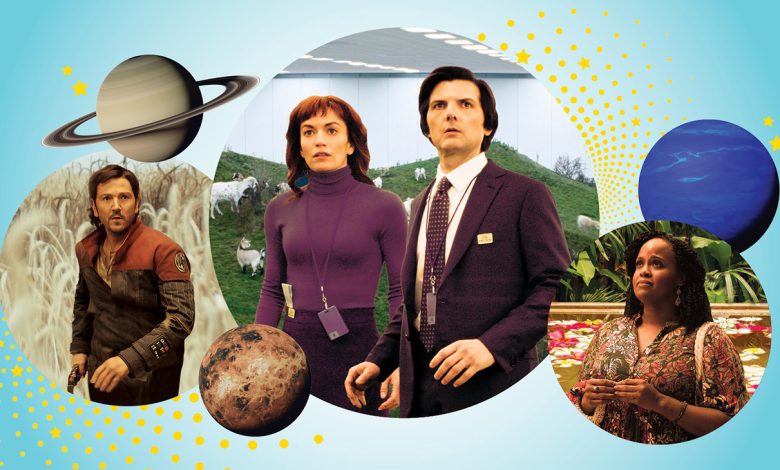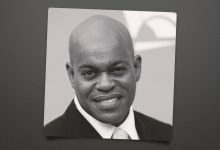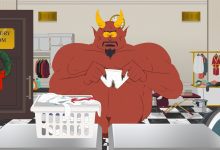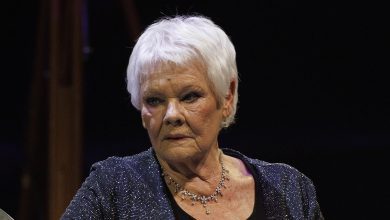How World-Building Took Over Television

Television series these days have never been busier. Shows exist against a backdrop of sprawling storylines; they contain characters with indefinite spinoff potential. When Emmy voters start marking their ballots this season, they won’t just be weighing in on an episode, performance or even series. They’ll be evaluating a world — a set of interconnected characters and storylines that can extend far beyond the 30 or 60 minutes in front of them.
Andor delivers a new hope for Disney as it wraps up a stunning two-season arc for Cassian Andor (Diego Luna), the apolitical pariah turned revolutionary who gives his life in Rogue One: A Star Wars Story. That movie was initially a prequel to the original Star Wars: Episode IV — A New Hope, but Andor sets the stage for it far better, essentially resetting the entire Star Wars narrative as the result of rebel factions operating in the shadows of a fascist, Orwellian state.
To a certain degree, Mike White’s The White Lotus operates as a traditional anthology series. Yet in the second and third seasons, characters and dilemmas have sneaked into new scenarios, enhancing the stakes without fleshing out all the details, so audiences can dig around for clues. Sure, one can enjoy The White Lotus as a keen satire of consumer excess. But viewers can also contemplate the complex history behind this global resort industry that seemingly unfolds endlessly from one season to the next.
Severance offers its own example. While as a serialized piece the Dan Erickson show has not yielded standalone seasons or separate products, it still suggests a larger world that might one day be populated with them. Its story of office drones who only exist at the workplace is an entrancing sci-fi premise on its own, but it unfolds against the compelling backdrop of the eerie Lumon Industries, a company and cult with a history that stretches back decades and invites more speculation than the first two seasons could possibly resolve.

World-building on TV goes back many decades to Star Trek, got hip with Twin Peaks in the early 1990s, was given an extra boost in the aughts with Lost — and, in a more populist way, with Dick Wolf worlds like Law & Order and later FBI.
But the current spate of episodic world-building also extends from other phenomena. Fan culture has consumed interconnected mythologies for generations, from J.R.R. Tolkien to Dungeons & Dragons, both of which had cemented their status before Star Wars became the industry standard in 1977.
A quarter-century ago, The Matrix encompassed a franchise that existed across not only three movies but comic books, anime and one very densely plotted video game, rewarding only the truest die-hards.
The birth of the Marvel Cinematic Universe with Iron Man in 2008, The Avengers in 2012 and the many moneymaking movies that followed proved that world-building on a massive commercial scale wasn’t some once-in-a-generation anomaly — it was the new market standard. Now, an intricate mythology is intrinsic to virtually every major facet of popular culture, from Minecraft to Brat Summer. Our cluttered media landscape demands that everything connects to some bigger picture to make it worth the investment. This outcome means that sprawling universes go well beyond the MCU. Stories that don’t at least hint at some measure of a lineage struggle to stand out.
At times, of course, this can all be overwhelming — tedious to the point of exhaustion, and a perfect recipe for viewers tuning out. All this mythologizing risks alienating people only looking for a toe-dip. But the universe show offers viewing pleasures that previous iterations of TV never did. And in addition to providing puzzles for viewers to chew over, the “universe” factor can, not for nothing, also help a show during Emmy season, where ambitious achievements tend to break through the noise better than modest ones.
Not that a universe show always has to call attention to itself. As Andor progresses through its bracing second season, it never slows to linger on references to fan favorites from the famous installments. Showrunner Tony Gilroy grasps that the milieu provides such a powerful foundation that it requires no additional explanatory context. Audiences either fill in the gaps or — crucially — they don’t have to keep up with the backstory at all, because Andor fully exists on its own terms.
Sometimes the universe piece can even turn its messiness into an advantage. With their Matrix sequels, the Wachowskis were ahead of the curve in terms of storytelling that wields confusion by design: Neo (Keanu Reeves) is trying to make sense of his reality along with the audience, and making sense of an ever-changing reality feels especially potent in 2025. Severance carries forth that legacy. In its recent season, the show has explained a lot — certainly more than precedents like Twin Peaks and Lost — but the plight of its heroes doesn’t necessarily tell the whole story. The origins of Lumon as a business, dogma and lifestyle inspire endless possibilities. What can seem overwhelming is also what keeps people hooked.
That’s the thing about world-building: No matter how expansive the possibilities, audiences can decide how deep they want to go. There are risks to overextending the welcome, but potential rewards can be just as plentiful.
This story appeared in the May 21 issue of The Hollywood Reporter magazine. Click here to subscribe.
Source: Hollywoodreporter
HiCelebNews online magazine publishes interesting content every day in the TV section of the entertainment category. Follow us to read the latest news.
Related Posts
- Chris Brown Freed on $6.7 Million Bail in Assault Case, U.K. Court Rules
- Diddy Trial Day 8 Live: Witness Testimony Continues, with Kid Cudi Appearance Possible This Week
- Jason Momoa Is Done With Peace in Apple’s ‘Chief of War’ Teaser
- “I Turned Into An Animal”: Shia LaBeouf Talks Cannes Doc ‘Slauson Rec’ About Theater Collective (Exclusive)
- Jimmy Kimmel's 4 Kids: Everything He's Said About Parenting





